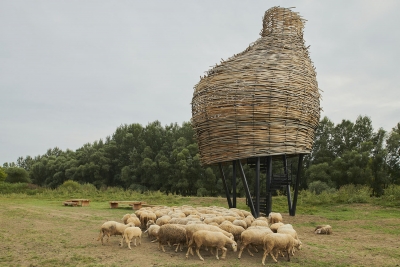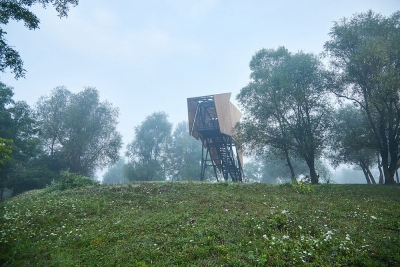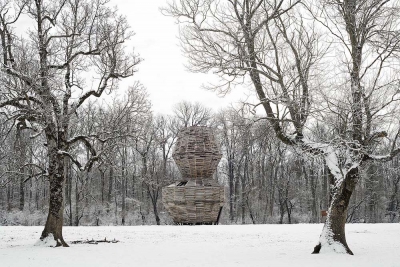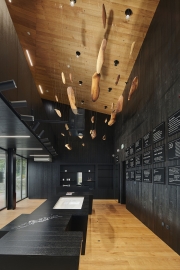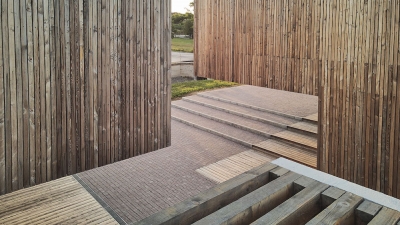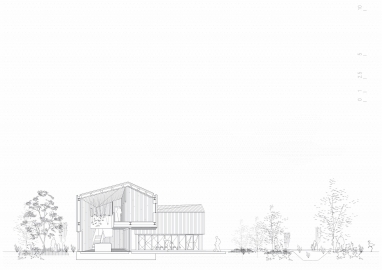Lonja Wetlands Wildlife Observatories and Visitor Centre
Exploring the unique protected landscape of the Lonja wetlands is planned through a network of entry-points, visitor centres and observatories placed alogn the edges of the nature park. The visitor infrastructure embodies centuries of culture adapting to a landscape in constant flux, of anthropogenic and natural symbioses, of a border condition.
The Osekovo visitor centre samples rural morphologies and tells the stories of the flora, fauna and cultural heritage. It repeats the scales and materials of surrounding rural morphologies, placing an info-point and administration in one house, an exhibition and auditorium in the other. The two buildings frame a communal square defined by deep trapezoid porticos and denivelations, initiating a focus of rural communal life. To expose the radical changes this environment goes through even closer, a network of observatories is placed along its edges. They serve as markers and vistas for witnessing slow change of waters, migrating wildlife, free-range livestock, but are also a ludic element of the landscape. Their biomorphic language is not explicit, yet embodies movement, organic form, traditional tools, echoing the locally familiar.
Centuries of dynamic symbioses of wild, domesticated and human species created expressions of a cultural heritage which grew from the relationship of an everchanging landscape and communities synchronizing their way of life with it. The exhibition of the visitor centre presents this unique, centuries old coexistence, condensing a varied sensorial introduction before embarking on a visit to the vast wetland. The observatories continue the distinct, upright language of verticals of past watchtowers placed along the divides of two empires, hunting box-stands and old observatories, now reframing their role as devices for raising awareness of this environment’s importance. They enable a view of the horizontal wetland and its diverse lifeforms, in which the visitors remain hidden to the wildlife and livestock passing by. Establishing a dialogue of their own, free from direct references, they act as mediators between the native, the cultural and the mythic. In a non-hierarchical environment these new points provide a fleeting identity, blurring the borders between languages of the anthropogenic and the natural.
The Lonja wetlands go through radical changes over the course of a year, with the flooding rhythm attracting birds, fish, feeding groves of oak and ash, providing plains for freely roaming livestock. These species and specific built heritage provide the basis for the infrastructure’s materialization. The structures of both the visitor centre and the observatories utilize contemporary and locally sourced materials, repeating vernacular morphologies and techniques. Using available materials, built by local builders, communicated a sense of belonging not only in the project but also in the making of the network. The main materials in both the centre and the observatories are oak and steel, with additions of ashwood, chestnut and larch. The air space inside each building connecting the ground floor and the gallery is filled with wooden sculptural installations connoting flocks, driftwood, flux. In the exhibition, a complex ecosystem is interpreted through a combination of analogue interactive exhibits, digitally told stories, sculptural fragments and tactile reliefs, communicating the wetlands through traditional materials in new implementations.

